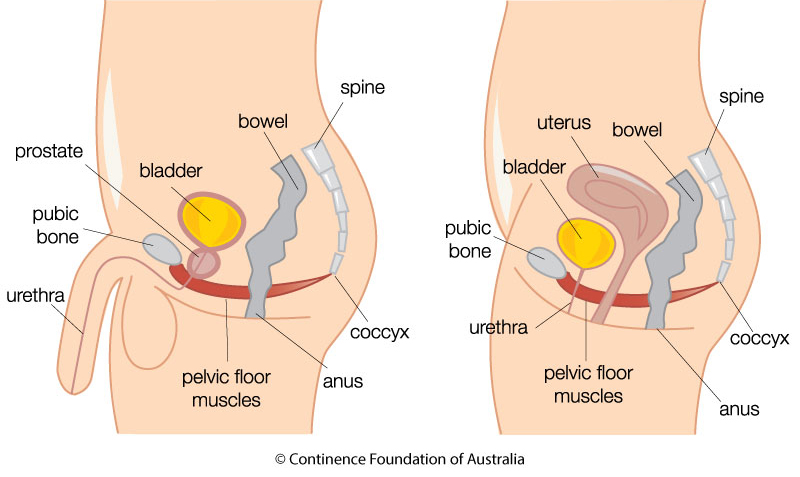Pelvic Floor
by Michelle Smith in Training | Uncategorised

Pelvic Floor
The pelvic floor muscles are the foundation of the core. They include a number of muscles that make up the walls of the pelvis cavity. The pelvic organs sit on the pelvic floor muscles within this cavity.
The pelvic floor are a funnel shaped musculature structure.

Function of the pelvic floor
To support the internal organs
To with stand load and internal pressure when sneezing, coughing or lifting
To be able to relax and contract to allow passing of waste
Play a role in sexual function
The muscles of the pelvic floor work in unison they contract to prevent and stop any leakages of urine from the bladder, wind and faeces from the bowel. They relax to release waste products then contract back to a resting tension to maintain control.
Poor posture, fallen arches of the feet, a tilted pelvis, weak tight or overactive glutes, to childbirth, menopause and trauma can all effect the pelvic floor muscles. Causing them to not function correctly leading to leakages when performing exercise or day to day activities.
Finding the pelvic floor
Its important to lift and squeeze inwards and not to bear down when practicing to contract the PF muscles. Has bearing down can strain causing more weakness.
Try to
- Pull up gently from the back
- Travel along the middle
- Travel up to the front
- Try to breathe normally
- Try performing this action in different positions like laying, sitting or standing. This will help to build strength and awareness of the PF muscles.
Do NOT
- Hold your breath has this will cause intra-abdominal pressure
- Squeeze the buttocks, thigh or lift up through the shoulders. This may take time to master.
Its important to be able to engage the pelvic floor without using other muscles like the glutes or the inner thighs. This will take practice and patients to connect the motor skills of this area.
The position the body is in can change the feeling of the contraction of the pelvic floor so try laying down has this will aid the body to relax. Start on your back then try your right and left side in the foetal position.
Seated on a chair with feet flat, slightly lean forward or seated on a floor leaning back into a wall with knees bent. Take note of how the different positions feel.
Breathing & Pelvic floor link
The diaphragm is a dome-shaped muscle that sits below the lungs. It’s like the ceiling of the core. It works with the pelvic floor to control and regulate intra-abdominal pressure.
With an inhale the diaphragm contracts and flattens allowing the lungs to expand and the pelvic floor relaxes. When exhaling the diaphragm relaxes and domes with the pelvic floor relaxing back to resting state.
If the rib cage doesn’t expand on an inhale this causes pressure in the abdominal cavity and pelvis which causes excess pressure on the pelvic floor muscles.
This is the same pressure the pelvic floor will have if we hold our breath with any exertion when resistance exercise.
Bad breathing practice can create a lot of negative pressure on the pelvic floor which over a period of time can cause damage.
When performing exercises to help improve strength of the pelvic floor you relax the pelvic floor with an inhale then with an exhale that’s when you contract (squeeze) the pelvic floor.
Exercising the pelvic floor muscles
There are two types of muscles within this area and its vital we work them both.
Slow twitch muscles do the endurance work, supporting the pelvic organs and managing incontinence.
These muscles need to be held for 10 seconds, released under control, and repeated 10 times. Preforming them 3 times a day.
The fast twitch muscles are the ones that come into action when we jump, sneeze, cough or lift.
The exercise for these types, is a fast quick hold for 1 second and released repeated 10 times. Again aiming for 3 times a day.
Initially it may be difficult to perform 10 sets so slowly build it up. Take rest breaks if needed has the muscles will become tired has you build up the strength.
It can take up to 16 weeks to feel a significant improvement.
If you need help with connecting and exercising the pelvic floor, please contact me at the studio.
Michelle x
